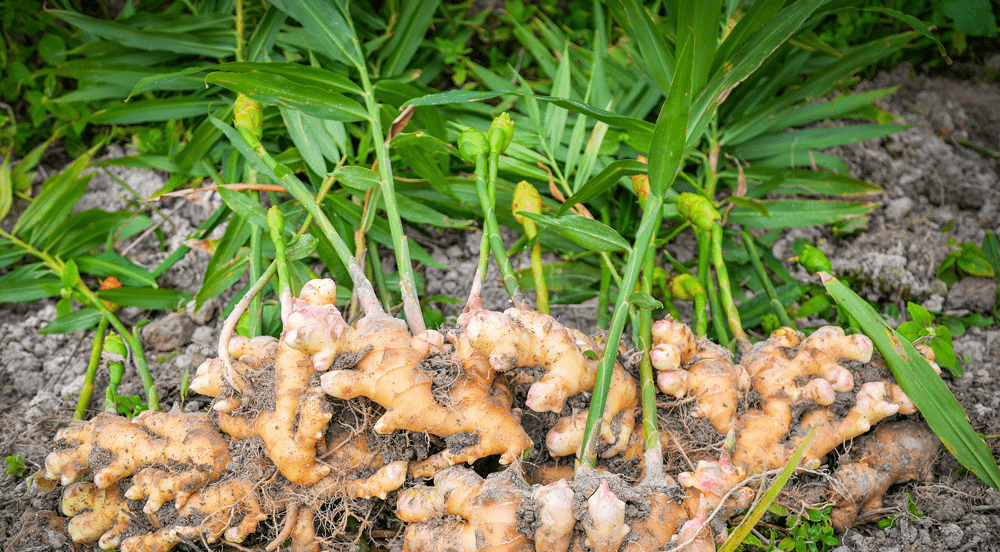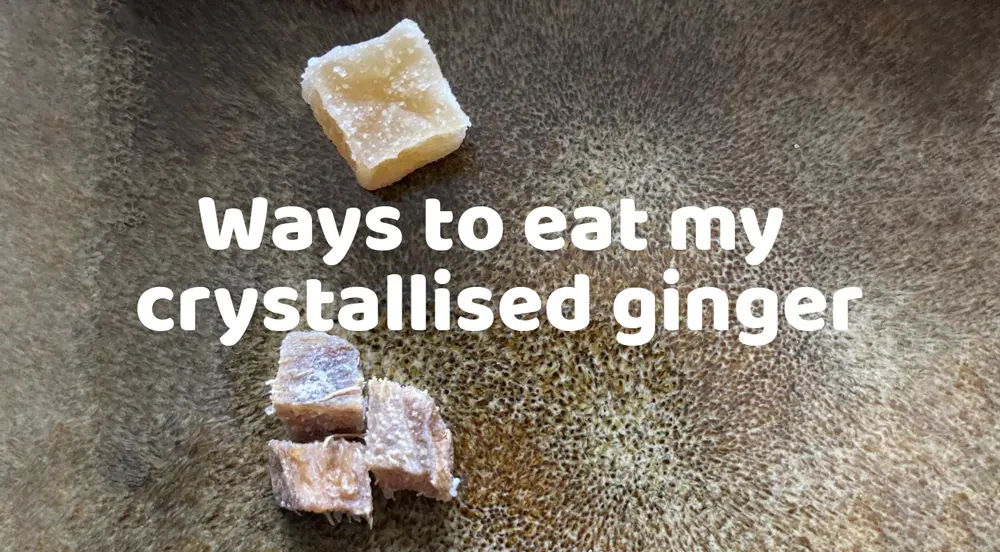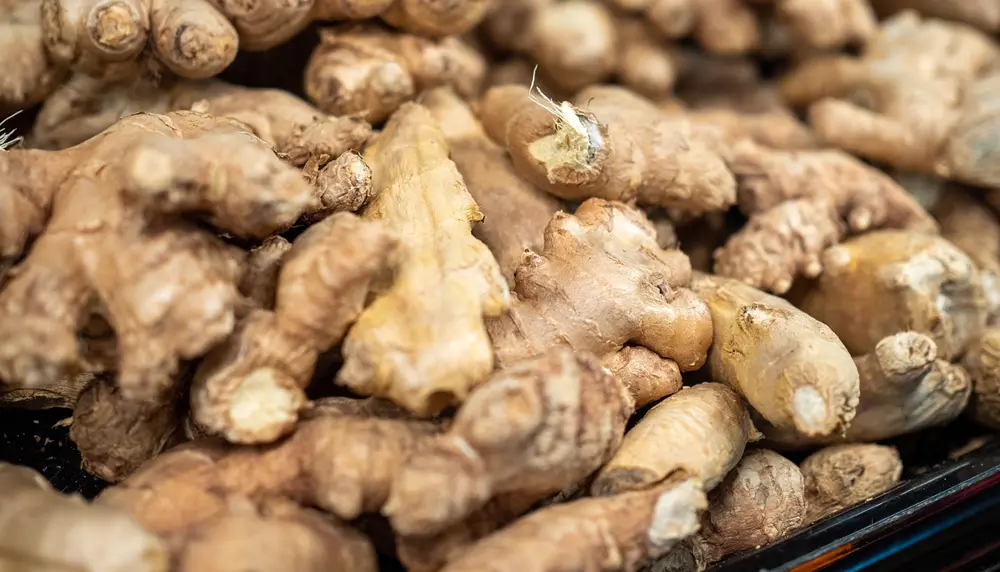
So why Peruvian ginger?
A few years ago, you would have only found Chinese ginger in supermarkets. However, ginger from Peru and Brazil is now starting to appear on our shelves. This is due to availability issues caused by lower harvests, which has led to greater interest and better pricing for Peruvian ginger.
When I first started making my Crystallised Ginger back in Canada in 2016, along with ginger shots, I used Chinese ginger. While I was at a local market in Calgary, Alberta, I discovered ginger from Peru. It was a hobby at first, something delightful to create and gift to other ginger fanatics. A friend of an ex, who managed a gym, absolutely adored my crystallised ginger. Perhaps it was the strong zing from the ginger that could shake off any bodily slump, or simply the burst of energy needed to get through a busy day and be welcomed by little kids upon returning home.
After returning to Ireland, I noticed that the most readily available ginger was organic Peruvian ginger, imported into the Netherlands. In the US, you can readily find Hawaiian and Jamaican ginger in supermarkets. I’ve come across various studies on ginger in general, including its benefits for women during early stages of pregnancy. I have provided a few links at the bottom for you to explore some interesting ginger facts. I have also noticed ginger from Peru and Brazil appearing on supermarket shelves. However, I find the plastic packaging it often comes in to be unnecessary, much like with some vegetables.
Desiring to incorporate sustainable ingredients led me to consider the differences in farming approaches between Peru and the over-fertilized and heavily grazed growing areas of China. In Peru, there is a strong connection to nature and Mother Earth, referred to as Pachamama by the indigenous people of the Andes. Pachamama is viewed as a goddess nurturing fertility in planting and harvesting, while also being attributed to crop failures and earthquakes.

Image of Peruvian ginger
Apart from Pachamama, ginger cultivation in Peru involves intercropping with other plants to enhance microbial diversity and create better growth conditions. It is not surprising that the cultural influence of Pachamama still persists, as 95% of the ginger in Peru is organic. All of these factors contribute to the quality and high nutrient content of ginger from Peru.
When I mention high nutrient content, I am referring to the spiciness resulting from the concentration of gingerol. The Mojo blog (linked below) conducted an analysis comparing the concentration levels of compounds gingerol and shogaols in Peruvian and Chinese ginger roots. Gingerol and shogaols are the compounds responsible for ginger's anti-inflammatory and antioxidant properties. The combination of these two compounds is 2.5 times higher in Peruvian ginger compared to Chinese ginger.
With higher concentrations of a pure compound like gingerol, it can potentially improve one's health or condition more effectively than regular ginger. However, individual responses to health-related matters can vary. My information comes from various sources, including college studies and other food blog webpages.
https://www.frontiersin.org/articles /10.3389/fmicb.2020.579719/full - Intercropping With Turmeric or Ginger Reduce the Continuous Cropping Obstacles That Affect Pogostemon cablin (Patchouli)
https://mojudrinks.com/blogs/learn/ why-mojus-peruvian-ginger-is-best
https://www.organicproducenetwork.com/ article/828/organic-ginger-from-peru-entering-peak-season
Disclaimer:
The above information is my own research and views and should not be used for medical diagnose. Please seek out professional medical advice. As everyone is unique, one volume of ginger taken can effect consumers differently.
So why Peruvian ginger?
A few years ago, you would have only found Chinese ginger in supermarkets. However, ginger from Peru and Brazil is now starting to appear on our shelves. This is due to availability issues caused by lower harvests, which has led to greater interest and better pricing for Peruvian ginger.
When I first started making my Crystallised Ginger back in Canada in 2016, along with ginger shots, I used Chinese ginger. While I was at a local market in Calgary, Alberta, I discovered ginger from Peru. It was a hobby at first, something delightful to create and gift to other ginger fanatics. A friend of an ex, who managed a gym, absolutely adored my crystallised ginger. Perhaps it was the strong zing from the ginger that could shake off any bodily slump, or simply the burst of energy needed to get through a busy day and be welcomed by little kids upon returning home.
After returning to Ireland, I noticed that the most readily available ginger was organic Peruvian ginger, imported into the Netherlands. In the US, you can readily find Hawaiian and Jamaican ginger in supermarkets. I’ve come across various studies on ginger in general, including its benefits for women during early stages of pregnancy. I have provided a few links at the bottom for you to explore some interesting ginger facts. I have also noticed ginger from Peru and Brazil appearing on supermarket shelves. However, I find the plastic packaging it often comes in to be unnecessary, much like with some vegetables.
Desiring to incorporate sustainable ingredients led me to consider the differences in farming approaches between Peru and the over-fertilized and heavily grazed growing areas of China. In Peru, there is a strong connection to nature and Mother Earth, referred to as Pachamama by the indigenous people of the Andes. Pachamama is viewed as a goddess nurturing fertility in planting and harvesting, while also being attributed to crop failures and earthquakes.

Image of Peruvian ginger
Apart from Pachamama, ginger cultivation in Peru involves intercropping with other plants to enhance microbial diversity and create better growth conditions. It is not surprising that the cultural influence of Pachamama still persists, as 95% of the ginger in Peru is organic. All of these factors contribute to the quality and high nutrient content of ginger from Peru.
When I mention high nutrient content, I am referring to the spiciness resulting from the concentration of gingerol. The Mojo blog (linked below) conducted an analysis comparing the concentration levels of compounds gingerol and shogaols in Peruvian and Chinese ginger roots. Gingerol and shogaols are the compounds responsible for ginger's anti-inflammatory and antioxidant properties. The combination of these two compounds is 2.5 times higher in Peruvian ginger compared to Chinese ginger.
With higher concentrations of a pure compound like gingerol, it can potentially improve one's health or condition more effectively than regular ginger. However, individual responses to health-related matters can vary. My information comes from various sources, including college studies and other food blog webpages.
https://www.frontiersin.org/articles /10.3389/fmicb.2020.579719/full - Intercropping With Turmeric or Ginger Reduce the Continuous Cropping Obstacles That Affect Pogostemon cablin (Patchouli)
https://mojudrinks.com/blogs/learn/ why-mojus-peruvian-ginger-is-best
https://www.organicproducenetwork.com/ article/828/organic-ginger-from-peru-entering-peak-season
Disclaimer:
The above information is my own research and views and should not be used for medical diagnose. Please seek out professional medical advice. As everyone is unique, one volume of ginger taken can effect consumers differently.








Related Posts
How to make ginger tea with my crystallised ginger
Will ginger help heartburn / acid reflux / GERD?
Ginger effects & Menopause
Explore My Crystallised Ginger | A Culinary and Wellness Journey
Welcome to my Ginger Inspired Goodies